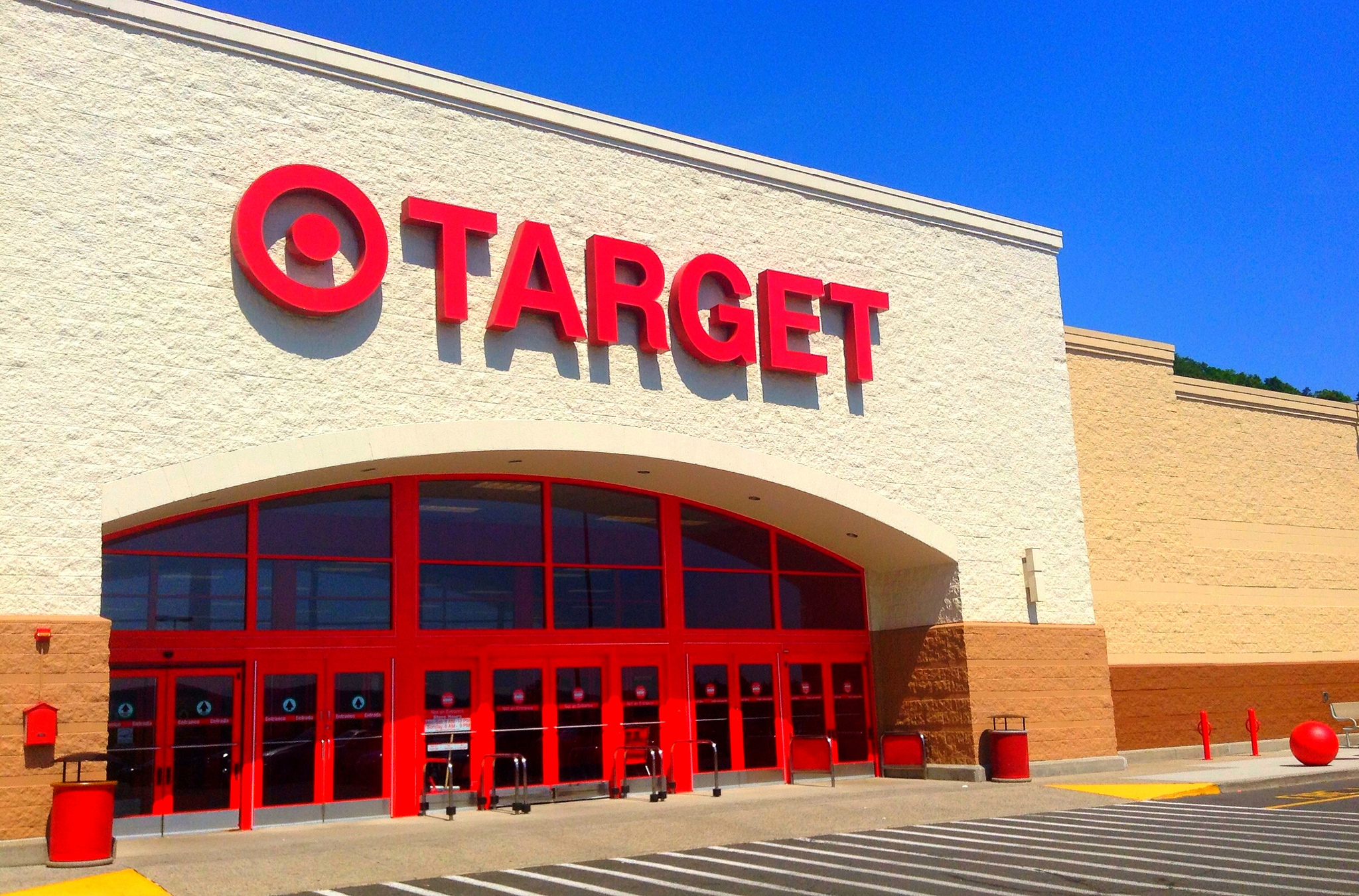Recently, Target quietly posted a rather important update to its sustainable products standard addressing toxic chemicals. Bloomberg broke the news early this morning.
Target’s Sustainable Product Index (formally known as the Sustainable Product Standard) is a program launched to encourage and incentivize suppliers to bring more sustainable products to market — especially those free of dangerous chemicals in beauty, personal care, baby care and cleaning products.
The updated standard now includes a number of substantial improvements to the original version, which will help drive suppliers away from toxic chemicals in products sold in their stores.
In the introduction to the new version, Target summarizes some of the key changes made to the program:
“In response to stakeholder comments on the initial criteria, we have expanded the set of regulatory lists used to identify chemicals of concern, refined the information used to evaluate packaging, incorporated third-party certifications and are piloting key issues that are specific to product categories.”
With an expanded universe of criteria suppliers’ products are evaluated on, products now receive a score from 0 to 115 (with up to 135 points available for household cleaning products with the new pilot criteria – more on that below), and information is collected and evaluated using the UL Transparency Platform.
You can view the original version of the standard here, which we blogged about and publicly congratulated the company on when it was first announced. Be sure to check out our blog for a summary of the key elements of the original program, which I won’t revisit here.
How has the program been improved?
Let’s take a look at some of the most exciting elements of the expanded policy related to toxic chemicals:
- Taking on triclosan and a broader list of chemicals: Target added triclosan as well as Health Canada’s “Cosmetic Ingredient Hotlist – prohibited for use in cosmetics” to its list of “high level health concerns authoritative lists”, which already includes over 1,000 dangerous chemicals. We are particularly excited about these new criteria as triclosan is one of the chemicals on our Hazardous 100+ list we have been calling retailers to act on, and the Health Canada Cosmetic Ingredient Hotlist represents a large list of ingredients that are banned or limited in cosmetics by the Canadian government.
- Rewarding third-party DfE/Safer Choice and Cradle2Cradle certified products: The index has a whole new section on certifications, giving up to 15 points for third-party certified products. A product can receive 10 out of 15 points if it has been certified by either EPA Design for the Environment/Safer Choice program or Cradle2Cradle (Bronze, Silver or Gold). The policy surprisingly doesn’t include GreenSeal, which would be another useful program to include.
A product can also receive 3 points if “one or more feedstock materials have been certified as USDA organic or biopreferred, non-GMO, fair trade or sustainable produced” though they don’t list which certifying bodies are relevant for each area.
- Piloting new criteria for cleaning products that incentivizes the use of safer chemicals: Target has also developed a new set of criteria specifically for household cleaning products such as laundry detergents and surface cleaners. Half of the additional credit for cleaners rewards those cleaning products containing ingredients on the Safer Chemical Ingredients List (SCIL) developed by EPA’s DfE/Safer Choice program. More specifically, “a product will receive 3 points if up to 25% of its ingredients are on the Safer Chemical Ingredients List (SCIL), 5 points if 25%-50% of its ingredients are on the SCIL, and 10 points if 100% of its ingredients are on the SCIL.”
- New product category: feminine care products, and more categories to come: Target is now for the first time adding feminine care products to the index, which our partners at Women’s Voices for the Earth have been calling attention to in recent years. Target states that “other product categories will have an index in the future” which is a promising sign that perhaps they will finally add cosmetics and other products to the program.
- Clarifying transparency criteria: The language in the transparency section around generic ingredients (such as fragrances) has been slightly adjusted to now say, “A product will receive a maximum of 20 points if its ingredients are listed on packaging and website, ingredient purposes are listed on website and there are no generic ingredients on its publicly available ingredient list.” This provides an incentive for brands to publicly disclose chemicals in fragrances. Under water quality, the language has similarly been clarified to now say, “A product will receive 5 points if the ingredient list can be fully assessed and no ingredients are on the aquatic hazard lists.”
It’s important to note that these are not the only changes that have been made to the program, but those that are most relevant to driving toxic chemicals out of the value chain.
Thinking about continuous improvement
While we recognize that taking action on toxic chemicals for retailers is a challenging task, we find a few areas for improvement.
- What about cosmetics? While the new policy includes a list of cosmetic ingredients of concern, the policy does not actually apply to cosmetics, which Target said it would add in 2014. The company notes that “other product categories will have an index in the future” — we hope Target will finally add cosmetics to the policy by the end of this year, including new criteria as they have done for the cleaning products pilot. Other product categories ripe for action include apparel, electronics, infant and children’s toys.
- No public timeframe for reduction of priority chemicals. In the policy, Target has flagged over 1,000 chemicals “with high level health concerns” that are “recognized as carcinogenic, developmental or reproductive toxicants, endocrine disruptors, or have other serious adverse health effects”. This is fantastic, but the policy unfortunately does not set any specific goals or timeframes for suppliers to transition away from harmful chemicals that they have flagged.
- Suppliers need guidance in assessing alternatives to chemicals of concern. Target should develop guidance for vendors to assess alternatives to chemicals of concern and reward suppliers that have policies or programs in place to assess alternatives to chemicals of high concern, that are aligned with the Common Principles for Alternatives Assessment. For example Walmart encourages suppliers to avoid “regrettable substitution” by evaluating the hazards of replacement chemicals and embracing best in class “informed substitution” and “alternatives assessment” principles. Walmart states:
“Informed substitution is the considered transition from a chemical of particular concern to safer chemicals or non-chemical alternatives [1]. Using informed substitution principles will mitigate hazard risks associated with product formulation and achieve compliance with Walmart’s Policy on Sustainable Chemistry in Consumables…In the aim of advancing safer formulated products and promoting informed substitution, Walmart recommends the major tenets of Alternatives Assessment, a process for identifying, comparing and selecting safer alternatives to priority chemicals (including those in materials, processes or technologies) on the basis of their hazards, performance, and economic viability…”
In their implementation guide, Walmart cites many great resources, such as the GreenScreen, BizNGO’s Chemical Alternatives Assessment Protocol, and the Lowell Center for Sustainable Production’s Alternatives Assessment Protocol.
- What is Target suppliers’ chemical footprint? A new tool, the Chemical Footprint Project, could be embedded into the Sustainable Product Index and utilized by Target to evaluate their suppliers’ chemical policies. Target should evaluate how this tool can be included in the Index and join Staples and other businesses in being a Signatory to the Chemical Footprint Project.
Congratulations to Target for continuing to move the needle on toxic chemicals in the retail sector!
All in all, the updates to the Target Sustainable Product Index are a significant milestone for Target as they continue to leverage their purchasing power to help drive the marketplace towards safer products.
We applaud Target for improving their standard and look forward to working with them to continue to expand the program over time.
We hope other big retailers will follow suit to Mind the Store.
Join us in thanking Target for this step towards Minding the Store.
Tweet: Thank you @Target for taking another big step to address toxic chemicals! #MindtheStore #Target Learn more: http://bit.ly/1OLx6xF
Facebook: Target took another major step to move the market away from toxic chemicals – thank you! Learn more about their expanded Sustainable Products Index here: http://bit.ly/1OLx6xF #MindtheStore #Target
Or you can send Target a personal message.





